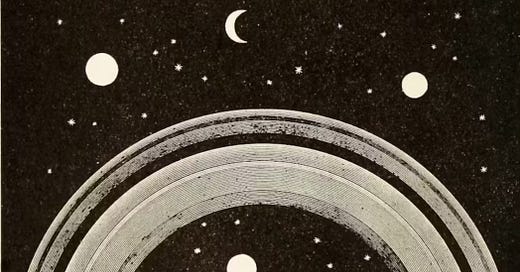A Seminar on the Planetary Cultures of the TempiP45XS Galaxy
As a requirement of her mission assignment (and as a sop to her detractors who felt her unqualified), Joanni was tasked with giving quarterly seminars on cultural issues of importance to the crew and guests of the Eridanus. This checked the box on some list of some bureaucrat in some department and satisfied some quota, so here she was. The newly-commissioned second lieutenant didn’t really mind, although she was a little nervous at the prospect of simply talking to people rather than performing for them. She no longer had her clesig as her accompanist. Her audience onboard ship was a captive one, however, so she could count on their presence, if not their attention.
Joanni entered the Deck 4 conference hall, noticed a larger percentage of alien crew members among the human crew—more so than on the bridge—and the first seminar began. And, while both Communications Chief Cat Morrison and Head of Language and Linguistics Ruthie McKaye were there, both the first officer and the captain of the Eridanus were not. Which was just as well. Tom’s presence would have made Joanni overly self-aware, and besides, someone had to fly the ship.
The talk started with a brief overview of the seven planets of the TempiP45XS Galaxy: three small inner planets without atmosphere or life; next in orbit was Oreana; then two planets on which all biological life was confined deep beneath each planet’s oceans. Both the similar properties and the close proximity of these two planets—AqueousMajorB409 and the smaller AqueousMinorB449—lead to speculation B449 had split from the mother planet B409 eons ago. Finally, in the farthest orbit, was the largest planet, Parsygian. Oreana and Parsygian were the two planets of significance in the TempiP45XS galaxy, and their cultures, as different as possible from one another in so many respects, would be analyzed in depth.
“Today we will talk about Oreana. The next presentation will focus on Parsygian,” Joanni said.
“From ISEA’s viewpoint, there have been two major areas of interaction with respect to Oreana. First, how initial contact was established between ISEA and Oreana; and second, the current working relationship between ISEA’s planetary governments and the governing body of Oreana, especially in terms of the mutual cooperation and exclusive mining rights and export treaty. On the first point, many of you know that I would not be standing here today if a hallowed ancient Oreanian artifact had not been stolen from them and then deposited on Earth when the space vessel carrying it (to whatever was to be its final destination) crashed to the surface. This artifact was a musical instrument—the closest recognizable thing would be an elaborate harp with pedals and tone holes—which the Oreanians call a clesig. This clesig eventually fell into the hands of a musician who recorded a song that traveled through space to reach Oreana’s listening devices and a return message was sent back. The first communication.”
There was a shifting in the audience at this point, and Joanni smiled and said, “Yes, that musician was me.”
“The key point here is that during ensuing communication, other than wanting their clesig back, the Oreanian Council was open to examination by an alien entity, but showed no reciprocal curiosity with respect to ISEA. This lack of exploratory drive can be traced back to their core ruling philosophy: we strive to reach perfection here before we venture forth. In other words, yes, you may admire our venerated artifacts and look upon our evolving perfection, but we have no interest in your world. Ours is sufficient for us.
“In regard to the second phase of interaction, relations since the signing of the mutual cooperation treaty have not been good, due to the second salient feature of the Oreanian makeup: arrogance (not too strong a term, as you will see) and an inability to compromise. The Oreanians have no military capability. They have risen above that, they say. The mutual cooperation treaty provides ISEA-funded orbital security for the planet in addition to security for the excavation and transport activities and personnel connected with the mining of vouronium on the surface. The Council has shown no gratitude for this protection and no inclination to abide by restrictions on exclusive mining rights as provided for in the treaty. A growing percentage of Council members have indicated a desire to formally terminate the treaty, causing, understandably, a rise in tensions all around.”
Here Joanni paused and took a breath. “I have been critical of the Oreanians, yes, and they deserve this evaluation, if however harsh, but now I want to turn and have us explore the beauty and mystery that is also Oreana . . .” (to be continued)
Image: Perfection as we describe it. Source: Detail from The Story of the Sun, Moon, and Stars. Agnes Giberne. Cincinnati, 1898. Public domain. Edited by J. Weigley



